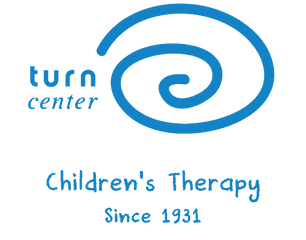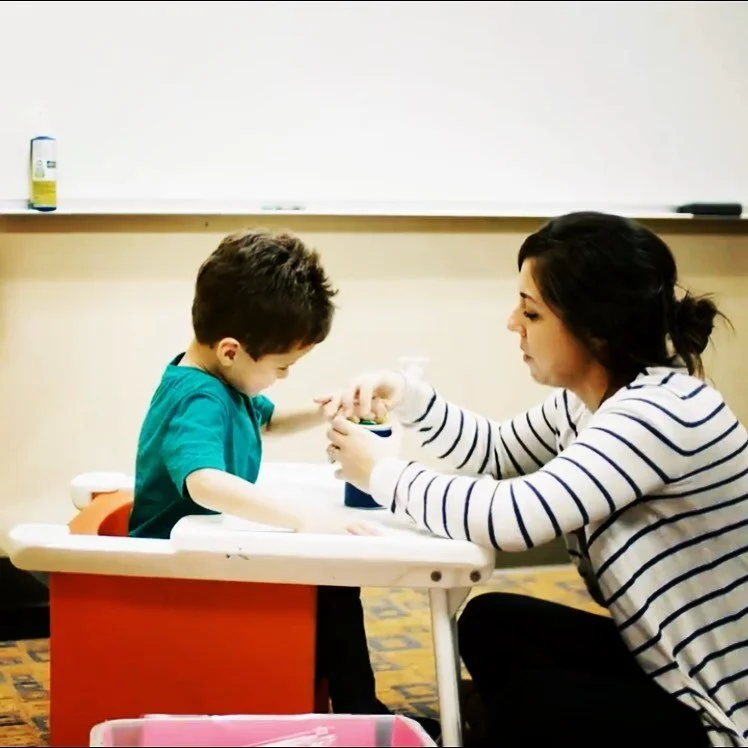Your Story Makes a Difference!
Telling our stories is a powerful tool to create change and provide hope to families who need it most.
Your willingness to share builds community for those who often feel hopeless and alone, inspires donors, and lifts up our entire community.
When I was 17 weeks pregnant, Juan and I went for our gender and “make sure everything looks good” ultrasound. A few minutes later we were ecstatic to find out we were having a little boy. We proceeded to go upstairs to the doctor’s office and that’s where our story took a sharp turn. We were informed our sweet boy had fluid on his brain and that there could be several reasons why but that we shouldn’t worry because it was probably nothing. We walked out of there defeated, upset, and extremely worried.
A week later, we sat in the office of a provider that specialized in abnormal ultrasounds. She was quick to determine that the ventricles in his brain were larger than normal. We proceeded to return to that office every week for the next month. The ventricles continued to increase in size and a fetal MRI was ordered.
The diagnosis was Dandy Walker. What was that? We had never heard of it. We were googling before we even left the office that day although they tell you not to do that. According to the Dandy Walker Alliance and the first place we read about it, Dandy-Walker Syndrome is a congenital brain malformation involving the cerebellum (an area at the back of the brain that controls movement) and the fluid filled spaces around it. The key features of this syndrome are an enlargement of the fourth ventricle (a small channel that allows fluid to flow freely between the upper and lower areas of the brain and spinal cord), a partial or complete absence of the cerebellar vermis (the area between the two cerebellar hemispheres), and cyst formation near the internal base of the skull. An increase in the size of the fluid spaces surrounding the brain as well as an increase in pressure may also be present.
The syndrome can appear dramatically or develop unnoticed. Symptoms, which often occur in early infancy, include slow motor development and progressive enlargement of the skull. In older children, symptoms of increased intracranial pressure such as irritability, vomiting, and convulsions, and signs of cerebellar dysfunction such as unsteadiness, lack of muscle coordination, or jerky movements of the eyes may occur. Other symptoms include increased head circumference, bulging at the back of the skull, problems with the nerves that control the eyes, face and neck, and abnormal breathing patterns. Dandy-Walker Syndrome is frequently associated with disorders of other areas of the central nervous system including absence of the corpus callosum and malformations of the heart, face, limbs, fingers and toes.
I know that seems like a long definition, but I can’t tell you the number of times we read it. Over and over and over. We just tried to make sense of what it meant and what kind of life that would lead our little guy to have. At some point, because it was all a blur, we were encouraged to seek out a pediatric neurologist because it was likely that Carter would have to have a shunt shortly after he was born. We were also told that abortion might be an option because they couldn’t guarantee Carters “quality of life.” These words still haunt me. When we left the specialists office that day, I knew we would never go back. Regardless of what Carter’s quality of life was, he was OURS and that was never an option for either one of us.
We knew Dallas was too far since our family lives in Canadian, but a friend recommended OU Children’s Hospital in Oklahoma City. I immediately got online and verified that they accepted our insurance. The next week we were being seen there. We went at least every other week, if not more, for sonograms to keep an eye on Carter. A few months later he still had enlarged ventricles but they weren’t increasing in size. We were hopeful that it would stay that way. 37 weeks into my pregnancy, I woke up early on a Saturday morning and realized something was very wrong. Juan immediately drove us to our local hospital, where I continue to be employed, and they immediately put us on a med flight to OKC.
Less than an hour later we touched down and less than two hours after that, Carter was born. He was born “limp and blue.” I’ll never forget those words on his medical notes. At some later point, we found out that not only did he have Dandy Walker, but also a congenital heart defect and needed surgery to repair a tracheoesophageal fistula. So, three genetic defects. That what a lot to take in and process. Luckily, we had and continue to have amazing friends, family, a church family, and employers that helped us process and get through those hard times. Carter had numerous surgeries, including open heart surgery, and was in the NICU for a total of 68 days. Those days were long and there were a lot of tears. And as it turns out, he never needed a shunt! The fluid resolved on its own, but if we hadn’t been at OU Children’s to have him, Carter’s outcome could have been completely different. Carter was able to join his siblings, ages 12 and 4 at home, at the end of Day 68!
Soon after we returned home with Carter, we were set up with Early Childhood Intervention Services, or ECI. Carter had a feeding tube that we used around the clock, including when he was at daycare. He had PT, OT, and Speech services for about 2 ½ years before we came to the Turn Center. Carter had already been able to get off his feeding tube so that was no longer an issue. He made leaps and bounds with ECI and those wonderful therapists, but we were apprehensive with the change and decided we would try it out before fully committing.
We had a few rocky first weeks, and the insurance authorization process was long and difficult (not because of the Turn Center, but because that is just how insurance companies are). However, the weekly 4-hour round trip (leaving at 6:30am every Wednesday) remains to be worth it when we see how excited Carter gets about walking in his walker, or being able to help make the decisions of what he does next, because he’s just as important in his therapy decisions as we are. Miss Michelle, Miss Monica and Miss Kalea are amazing, and so are the front staff, billing staff, and everyone else we pass in the halls. I’d be lying if I didn’t say Turn Center is part of our family.
The first time I saw Carter taking several steps with the walker I just cried. I couldn’t help it. I remember being so helpless at 17 weeks pregnant and not knowing what or how Carter’s story would play out. Carter turned 4 just a few weeks ago, and the Turn Center exceeds in meeting his needs.
He has been a patient for almost a year now and in that time has learned more sign language, learned to use a walker, been fit for bilateral AFOs to assist him in walking, and has become more independent and less aggravated on a daily basis because of what he CAN do instead of what he can’t. We know it’s just a matter of time before he is doing more though.
Thank you, Turn Center, for providing a necessary service to the kids of the Panhandle. As a parent, I truly don’t know what we would do without you. My only regret is that we don’t live closer to participate in all of the extra-curricular services that you offer on the weekends and evenings. And thank you, Michelle, Monica and Kalea for changing all of our lives and to Brad, thank you for having an office by the front door and a place for Carter to feel safe and wanted after each therapy session! I’m not sure what it is about your office, but kids love it and you are so kind for allowing him in anytime he wants!
Pam Guillen, Carter’s mom
January 2019
Kaiya was born at 39 weeks gestation. At the time, we had no idea what we would come to face with her. At 6 weeks old, her pediatrician noticed her head had not grown. Kaiya then had a CAT scan and MRI to check for any complications. They found no major complications or reasons why her head/brain was not growing and diagnosed her with microcephaly.
Between two and three months of age, Kaiya began having seizures called Infantile Spasms. Medications were not controlling them. Every genetic test came up normal, which makes Kaiya even more rare. We were told that she might only live to be around two years old, and if she does survive she won’t be able to do anything.
Kaiya will turn seven in July of 2019. We have never allowed what doctors have told us weaken our faith in how strong Kaiya is. Yes, Kaiya has epilepsy, cerebral palsy, visual impairment, and microcephaly. Over the years Kaiya has suffered a lot of pain from chronic infections, from C-diff, urinary tract infections, chronic lung disease, and neurological issues. However, we have always said that if God brings us to it, He will help us through it.
When Kaiya was about nine months old, Turn Center was brought into our lives. Kathy Hyatt, PT, Regan Hall, OT, and Gay Chalfant, Feeding/ST, were our first therapists. They welcomed Kaiya and me with open arms. They made me feel comfortable and helped me not feel so alone with this new world we’ve entered. They have helped me learn that we can celebrate the big and small things, like the first taste of food, a smile, a laugh, lifting her head for a few seconds, and raising her hands to her mouth.
Kaiya is now working with Landon Brown in speech to learn to communicate using a device. She is getting stronger and works so hard with Amanda Lawson in PT and Kalea in OT.
All the things usually taken for granted are such big steps for Kaiya. The Turn Center’s therapists and staff celebrate these things with us. They see how big these small steps are. When a child like Kaiya accomplishes something we were told she would never do, it amazes all of us. We have been so blessed by this an amazing, strong, sweet little girl and the community of support we have.
Kaiya’s mom, Cindi, January 2019




